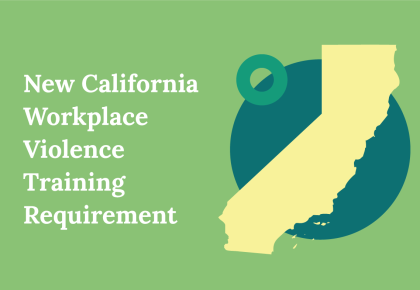10 Strategies to De-Escalate an Argument
Resolve Workplace Conflicts
In any workplace, conflicts can arise unexpectedly, leading to tense situations that have the potential to escalate into violence. Here are 10 effective strategies likely to defuse tensions and prevent conflicts from turning violent.
Stay Calm
The first and most crucial step in de-escalating a potentially violent argument is to remain calm yourself. Take deep breaths, focus on staying composed, and avoid reacting impulsively to another person’s aggression or hostility.
Listen Actively
Active listening is key to understanding the other person’s perspective and grievances. Give them your full attention, maintain eye contact, and avoid interrupting or dismissing their concerns. Paraphrase what they’ve said to demonstrate that you’re listening and empathize with their feelings.
Validate Their Feelings
Validate the other person’s emotions by acknowledging their feelings, even if you don’t agree with their viewpoint. Use phrases like “I understand why you feel that way” or “I can see why this is upsetting for you” to show empathy and respect.
Stay Neutral
Avoid taking sides or placing blame. Refrain from making personal attacks or escalating the conflict further with inflammatory remarks. Instead, focus on finding common ground and resolving the issue collaboratively.
Lower Your Voice
Speak in a calm and measured tone to help diffuse tension and create a more peaceful atmosphere. Lowering your voice can signal to the other person that you’re not attempting to escalate the situation and are open to resolving the conflict peacefully.
Use Nonverbal Cues
Nonverbal cues such as open body language, nods of understanding, and gentle gestures can convey a sense of empathy and receptiveness. Avoid crossing your arms, making aggressive gestures, or invading the other person’s personal space as this can escalate tensions.
Offer Solutions
Once the other person calms down, focus on finding solutions to the underlying issues that led to the argument. Brainstorm ideas together and indicate willingness to compromise and find mutually acceptable resolutions.
Take a Break
If emotions are running high and the situation shows no signs of de-escalating, suggest taking a break to cool off. Agree to revisit the discussion later when both parties are calmer.
Seek Support
If you’re unable to resolve the argument on your own, seek support from a neutral third party, such as a member of management. Their objective perspective can help facilitate productive communication and find a resolution.
Know When to Walk Away
Despite your best efforts, the other person may sometimes remain hostile or unwilling to resolve the conflict peacefully. In such instances, it’s important to know when to disengage from the situation to prevent it from escalating further. Your safety and the safety of others should always be the top priority.
In conclusion, de-escalating a potentially violent argument requires patience, empathy, and effective communication skills. By staying calm, actively listening, and seeking mutually acceptable solutions, you can foster a culture of respect and understanding in your interactions with others and help prevent conflicts from turning violent.
Train for Success
During and after the pandemic, incidents of workplace violence, particularly for frontline workers, increased. This leads to decreased morale and employee retention.
Syntrio worked with legal counsel to create workplace violence prevention training. It details the warning signs of each type of violence and positive and safe bystander intervention and de-escalation techniques.
Partner with us to help train your workforce to help keep them and those they serve safe. Use our training, which emphasizes the need to speak up about concerns, to build a better workplace.

